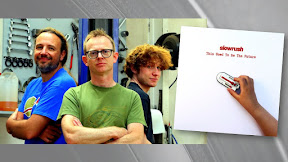Long-time readers may remember my attempt to visit Bordeaux using the local edition of the board game Monopoly as my roadmap.
I thought the adventure deserved to be turned into a video, and so here is a GoPro view of an early-morning non-stop bike ride through the city. Starting out in the Le Lac district to the north of the city and finishing up at Bordeaux Airport in the western suburb of Mérignac, the adventure takes in a wide variety of the city's streets, squares, neighbourhoods and landmarks.












0 commentaires: